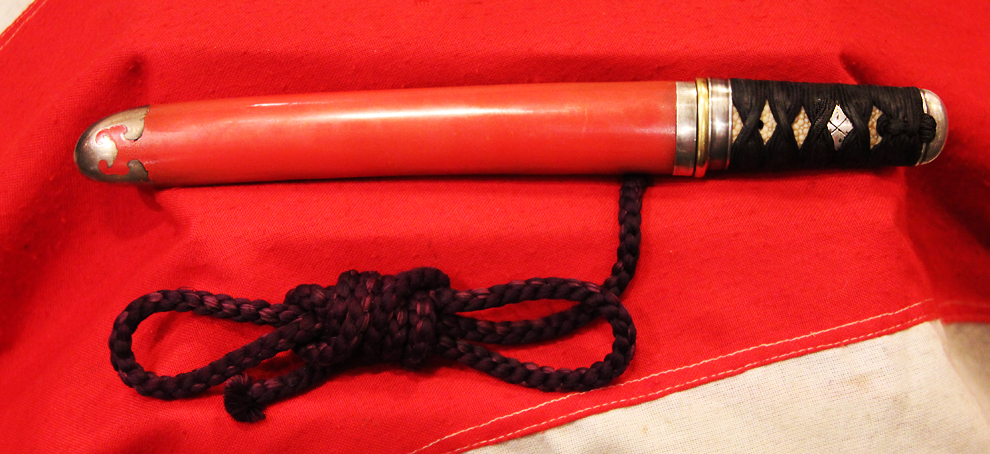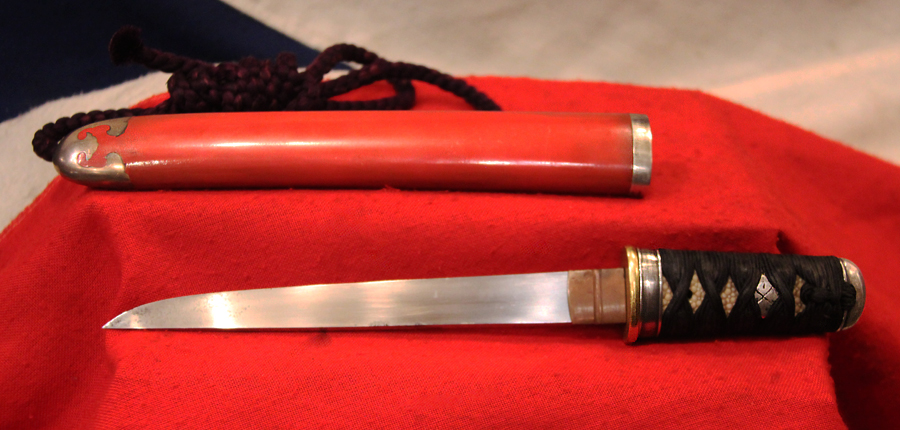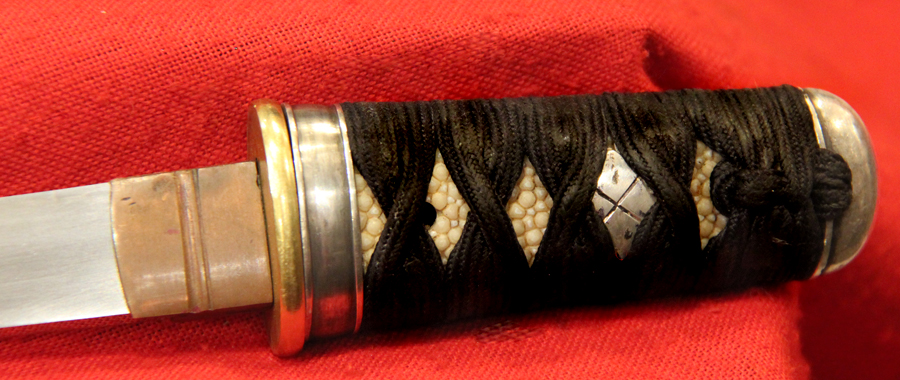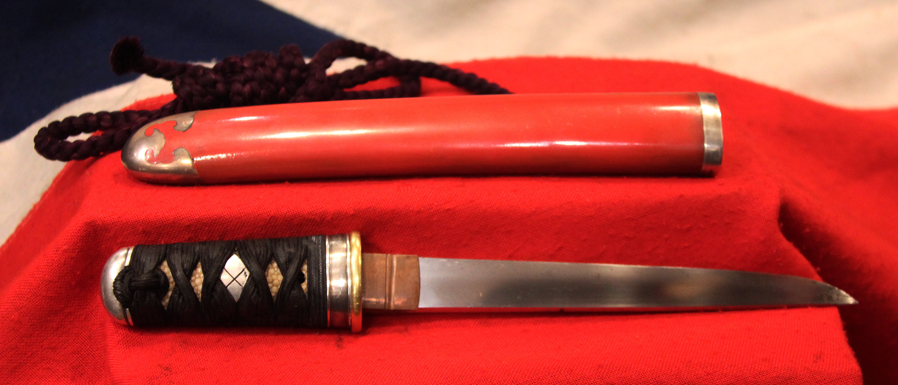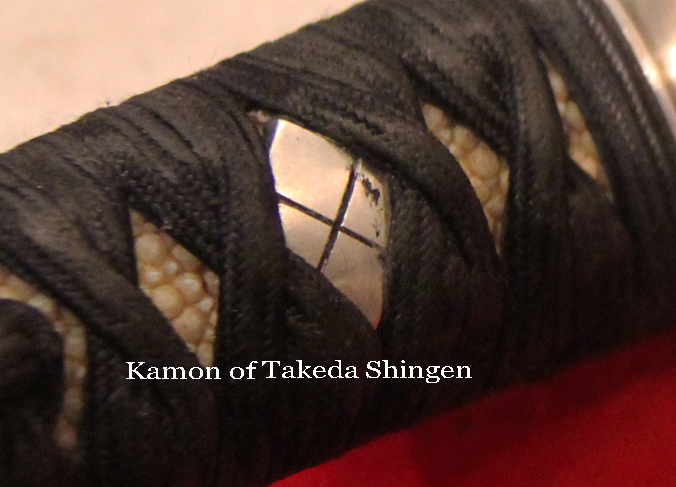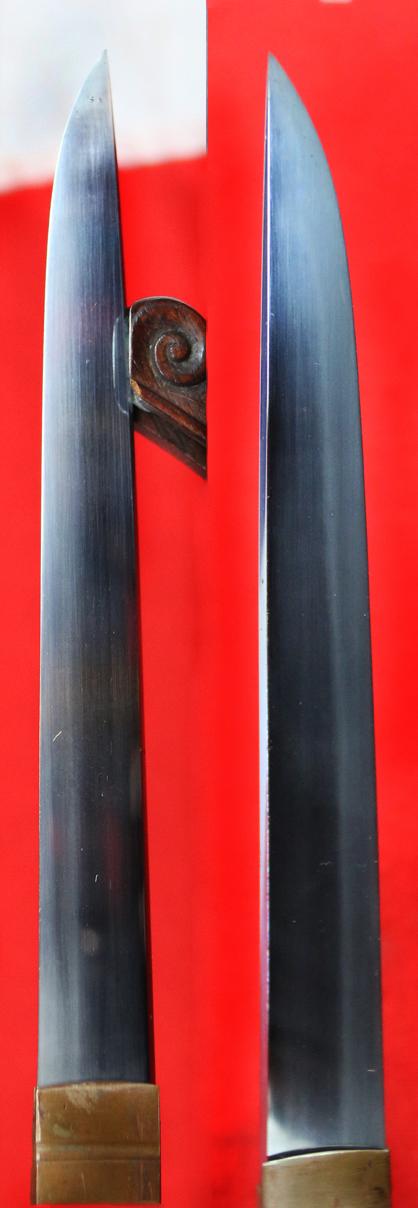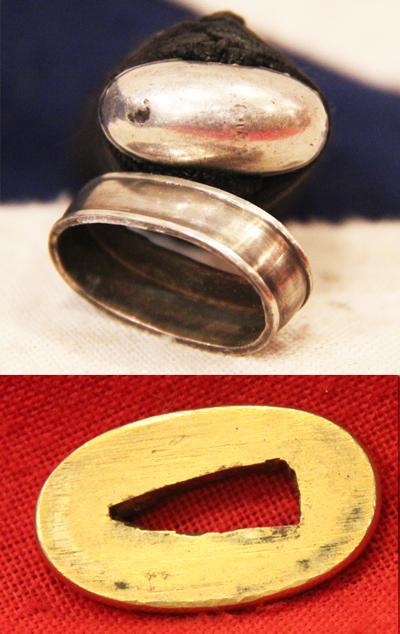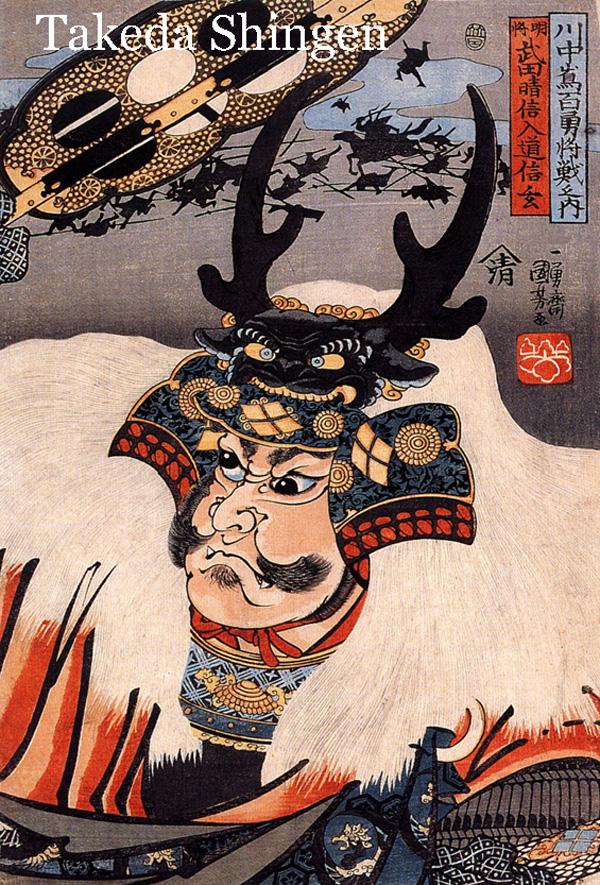Wonderful High Grade, Samurai Dagger From The Koto Era, Armour PiercingTanto By Kanesada. A Tanto of Likely A Highest Ranked Retainer of the Great Takeda Shingen 武田 信玄 & Bearing His Silver Mon {Crest}. Around 500 Years Old
Likely used by a high ranking samurai retainer in service of the great samurai commander of legend, Takeda Shingen, and bearing his clan mon menuki upon the tsuka {hilt} beneath the tsuka-ito {silk wrap}.
Takeda Shingen (武田 信玄, December 1, 1521 – May 13, 1573) was daimyo lord of Kai Province during the Sengoku period of Japan. Known as the "Tiger of Kai", he was one of the most powerful daimyo of the late Sengoku period, and credited with exceptional military prestige. Shingen was based in a poor area with little arable land and no access to the sea, but he became one of Japan's leading daimyo. His skills are highly esteemed and on par with Mōri Motonari.
The blade had a few small surface marks that we had removed by a Japanese trained artisan and it now looks incredible
Armour piercing Koto blade circa 1530, with superb original Edo period fittings koshirae, including silver copper alloy mounts and a gilt dragon saya ornament. Hammered gold over copper alloy oval tsuba, and silver clan mon menuki within the tsuka hilt wrap of the four interlocking diamonds of Takeda Shingen's clan.
The saya is decorated in superb cinnabar lacquer, the favoured colour and symbol of Takeda Shingen his armour was entirely based on this colour and the tsuka wrapped in black silk over Takeda kamon on giant rayskin.
In 1548, Shingen defeated Ogasawara Nagatoki in the Battle of Shiojiritoge and then took Fukashi in 1550.
After conquering Shinano, Shingen faced another rival, Uesugi Kenshin of Echigo. The feud between them became legendary, and they faced each other on the battlefield five times in the Battles of Kawanakajima. These battles were generally confined to controlled skirmishes, neither daimyo willing to devote himself entirely to a single all-out attempt. The conflict between the two that had the fiercest fighting, and might have decided victory or defeat for one side or the other, was the fourth battle, during which the famous tale arose of Uesugi Kenshin's forces clearing a path through the Takeda troops and Kenshin engaging Shingen in single combat. The tale has Kenshin attacking Shingen with his sword while Shingen defends with his iron war fan or tessen. Both lords lost many men in this fight, and Shingen in particular lost two of his main generals, Yamamoto Kansuke and his younger brother Takeda Nobushige. In 1563, allied with Hojo Ujiyasu, he captured Matsuyama Castle in Musashi Province. Takeda Shingen then took Kuragano in 1565 and Minowa Castle. He then moved against the Hojo by attacking Hachigata Castle then engaged in the Siege of Odawara (1569). He successfully withdrew after Hojo Ujiteru and Hojo Ujikuni failed to stop him in the Battle of Mimasetoge.Shingen and Tokugawa Ieyasu "came to terms" and occupied the "former Imagawa territory." They both fought against Yoshimoto's heir, Imagawa Ujizane. After defeating the intervention forces commanded by Hojo Ujimass of Sagami, Shingen finally secured the Suruga, formerly base of the prestigious Imagawa clan, as a Takeda asset in 1569.
Upon securing Takeda control over Suruga, northern Shinano, and western Kozuke, Shingen moved to challenge the Oda-Tokugawa alliance, leading a formidable force of over 30,000 into the latter's territories in Totomi, Mikawa, and Mino in 1572.
Photo number 8 in the gallery show the blade now looking stunning, the previous photos in the gallery show it prior to the professional attention undertaken, to show how much it has improved.
As once told to us by an esteemed regular visitor to us here in our gallery, and the same words that are repeated in his book;
“In these textures lies an extraordinary and unique feature of the sword - the steel itself possesses an intrinsic beauty. The Japanese sword has been appreciated as an art object since its perfection some time during the tenth century AD. Fine swords have been more highly prized than lands or riches, those of superior quality being handed down from generation to generation. In fact, many well-documented swords, whose blades are signed by their makers, survive from nearly a thousand years ago. Recognizable features of the blades of hundreds of schools of sword-making have been punctiliously recorded, and the study of the sword is a guide to the flow of Japanese history.”
Victor Harris
Curator, Assistant Keeper and then Keeper (1998-2003) of the Department of Japanese Antiquities at the British Museum. He studied from 1968-71 under Sato Kenzan, Tokyo National Museum and Society for the Preservation of Japanese Swords
Code: 21324
6995.00 GBP


